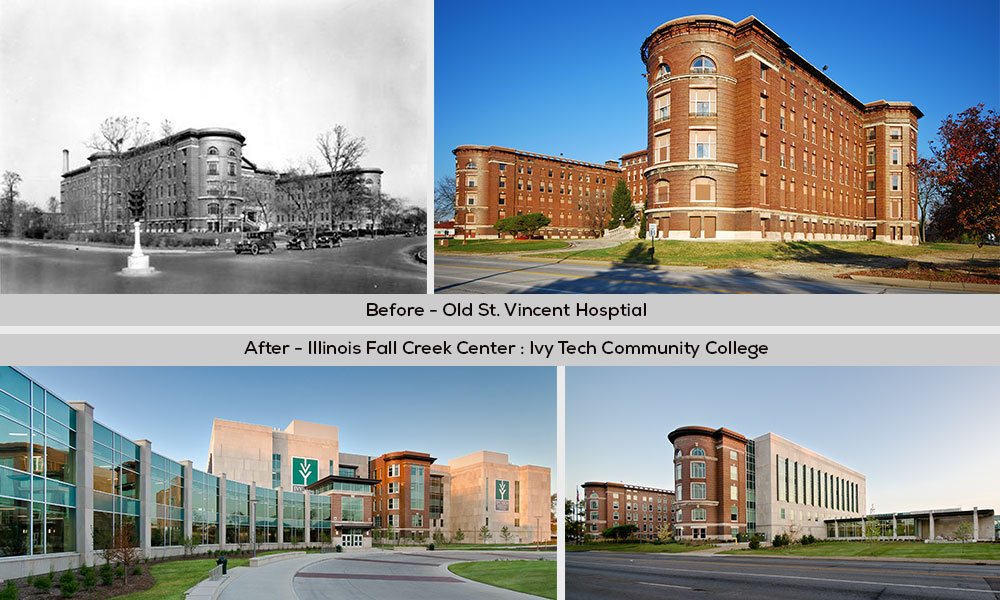
Adaptive Reuse: Breathing New Life into Old Buildings
Breathing new life into old buildings through adaptive reuse.As I stepped into the cavernous space of the Tate Modern in London, it was hard to imagine that this world-renowned art gallery was once a power station. The massive turbine hall, now hosting grand installations, and the towering chimney, an iconic landmark on the city's skyline, serve as a testament to the transformative power of adaptive reuse. This architectural practice of repurposing existing buildings for new functions is not just preserving our built heritage but is also shaping the future of our cities.
What is Adaptive Reuse?
Adaptive reuse is the process of repurposing buildings that have outlived their original purposes for different uses or functions while at the same time retaining their historic features[1]. Unlike traditional renovation, which updates a building within its original function, adaptive reuse breathes entirely new life into old structures. It's like giving a building a second career – imagine a fire station becoming a trendy restaurant or an old church transforming into a modern library.
The Rise of Adaptive Reuse
In recent years, adaptive reuse has gained significant traction in urban development circles. This surge in popularity is driven by several factors, including growing concerns about sustainability, the need for urban densification, and a desire to preserve cultural heritage[1]. As an urban planner, I've observed how this approach aligns perfectly with modern urban development philosophies that prioritize sustainability and community-centric design.

Economic Benefits
From an economic standpoint, adaptive reuse often presents a more cost-effective alternative to new construction. By utilizing existing structures, developers can save on demolition costs and reduce expenses related to new materials and construction[2]. In my experience, these projects can also serve as catalysts for neighborhood revitalization, potentially increasing property values in the surrounding area. Many cities and countries offer tax incentives and grants for adaptive reuse projects, particularly those involving heritage buildings, making them even more attractive to developers and investors.
Environmental Impact
The environmental benefits of adaptive reuse are substantial. By reusing existing buildings, we significantly reduce the demand for new materials and the energy required for construction[1]. The concept of embodied energy is crucial here – every brick, beam, and floorboard in an existing building represents energy already spent. Demolishing these structures not only wastes this embodied energy but also creates additional environmental burdens through demolition waste and the carbon emissions associated with new construction.
Preserving Cultural Heritage
One of the most compelling aspects of adaptive reuse, in my opinion, is its role in preserving cultural heritage. These projects maintain the character and history of our cities while adapting to modern needs. The challenge lies in striking a balance between preservation and modernization – respecting the building's past while ensuring its relevance for the future.
Challenges in Adaptive Reuse
However, adaptive reuse is not without its challenges. Bringing old buildings up to modern building codes can be complex and costly. Issues like asbestos removal in industrial buildings or lead paint in older structures can complicate projects[2]. Moreover, adapting spaces for drastically different uses – say, turning a warehouse into a residential loft – requires creative problem-solving and often specialized expertise.
Creative Examples of Adaptive Reuse
Around the world, we see inspiring examples of adaptive reuse. The High Line in New York City transformed an abandoned elevated railway into a beloved public park, revitalizing the surrounding neighborhoods. In Beijing, the 798 Art District turned decommissioned military factory complexes into a thriving arts community. And in my hometown, an old grain silo was converted into a boutique hotel, becoming a unique landmark that celebrates our agricultural heritage.
Impact on Urban Development
Adaptive reuse plays a crucial role in shaping urban landscapes. By repurposing existing buildings within city centers, it combats urban sprawl and promotes smarter, more sustainable growth[1]. It allows cities to evolve organically, maintaining their unique character while meeting changing needs.

The Future of Adaptive Reuse
Looking ahead, I believe we'll see adaptive reuse applied to more recent structures. As online shopping reshapes retail, we might see more shopping malls transformed into mixed-use community spaces. With changing work patterns, underutilized office parks could become affordable housing or educational facilities.
Controversies and Debates
It's important to acknowledge that adaptive reuse isn't always the answer. Sometimes, buildings are simply too deteriorated or ill-suited for repurposing. There's also the valid concern that adaptive reuse projects, particularly in trendy urban areas, can contribute to gentrification, potentially displacing long-time residents.
Conclusion
Adaptive reuse represents a powerful tool in addressing urban development challenges. It offers a way to honor our past while building for the future, creating unique spaces that tell the ongoing story of our cities. As we face increasing pressure to create sustainable, livable urban environments, the practice of adaptive reuse will undoubtedly play a crucial role in shaping the cities of tomorrow. After all, the greenest building is the one that already exists.
References
- https://www.archdaily.com/970632/adaptive-reuse-as-a-strategy-for-sustainable-urban-development-and-regeneration
- https://www.kaarwan.com/blog/architecture/challenges-opportunities-adaptive-reuse-architecture?id=597
- https://en.wikipedia.org/wiki/Adaptive_reuse
- https://www.optimumseismic.com/adaptive-reuse/prosperity-through-preservation-the-financial-benefits-of-adaptive-reuse-construction/
- https://archello.com/news/10-adaptive-reuse-projects-yielding-new-cultural-spaces
- https://gbdmagazine.com/adaptive-reuse/
The Tiny House Movement: Minimalism Meets Affordable Housing






Comments
Adaptive reuse projects often create some of the most interesting spaces in a city. The mix of history, design, and sustainability makes them truly stand out.
There’s something really special about repurposed buildings. The blend of old and new gives a unique character that’s hard to replicate with new construction.
I love the concept of breathing new life into old structures. It not only preserves architectural heritage but also reduces waste and saves resources. More cities should adopt this strategy.
Adaptive reuse is such a smart and sustainable approach! It’s amazing how old, abandoned buildings can be transformed into vibrant new spaces, preserving history while serving modern needs.
Leave a Comment